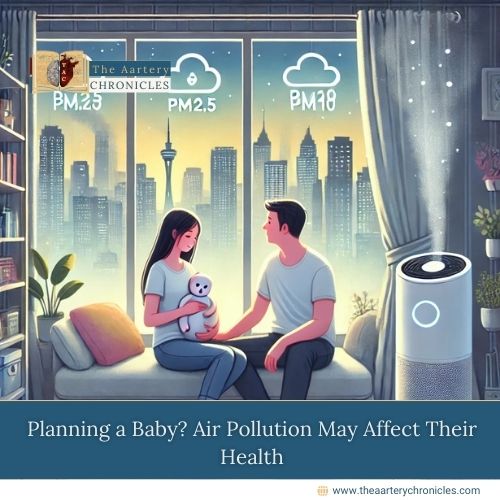

Planning a Baby? Air Pollution May Affect Their Health
A recent study has revealed that exposure to air pollution in the months before pregnancy could be linked to higher risks of obesity in children during their early years. The research, conducted on over 5,800 mother-child pairs in China, emphasizes the potential long-term impacts of environmental factors on child health.
Key Findings from the Study
The study, published in the journal Environmental Research, investigated the effects of air pollution exposure on children’s body mass index (BMI) and obesity risk factors up to the age of two. Researchers focused on three pollutants: PM2.5, PM10, and nitrous oxide, which are commonly found in urban environments.
Pollution Levels and BMI Increase
- A rise in PM2.5 levels by 16.2 micrograms per cubic meter during the three months before pregnancy was associated with an increase of 0.078 in children’s BMI z-scores (BMIZ) at age two.
- Similarly, an increase in PM10 levels by 21.1 micrograms per cubic meter correlated with a 0.093 rise in BMI at the same age.
The BMI z-score (BMIZ) is a measure that compares a child’s BMI with peers of the same age and gender, offering insights into their growth patterns.
Why Pre-Pregnancy Exposure Matters
While the health risks of air pollution during pregnancy are well-documented, this study highlights the importance of the preconception period—the three months before pregnancy. During this time, environmental factors can influence the health of eggs and sperm, which are in their final stages of development.
According to Zhanghua Chen, senior author and assistant professor at the University of Southern California’s Keck School of Medicine, “Although the increase in BMI is small, the widespread exposure to air pollution means the cumulative impact on childhood obesity could be significant.”
Growth Patterns Observed
From six months onward, children exposed to higher pollution levels before conception showed:
- Increased weight
- Higher BMI
- Faster BMIZ growth rates
The exposure was measured using satellite data, pollutant models, and meteorological factors based on participants’ home addresses.
Broader Health Implications
The study aligns with existing research that links air pollution during pregnancy to respiratory and chronic health conditions in children, such as heart disease and obesity. However, few studies have examined the effects of preconception exposure.
Practical Recommendations
While the study does not establish a direct cause-and-effect relationship, researchers recommend measures to minimize exposure to air pollution for those planning to conceive. These include:
- Using air purifiers at home
- Wearing masks in areas with poor air quality
- Staying indoors during high-pollution periods
Jiawen Liao, the study’s lead author, noted, “Taking steps to reduce exposure to air pollution before pregnancy may help lower the risk of obesity in children.”
Conclusion
This study sheds light on the importance of environmental factors during the preconception period. With air pollution being a global issue, these findings underscore the need for preventive actions to protect future generations. Reducing exposure to harmful pollutants can contribute to healthier outcomes for both mothers and their children.
Source: Inputs from various media Sources
I’m a pharmacist with a strong background in health sciences. I hold a BSc from Delhi University and a pharmacy degree from PDM University. I write articles and daily health news while interviewing doctors to bring you the latest insights. In my free time, you’ll find me at the gym or lost in a sci-fi novel.









